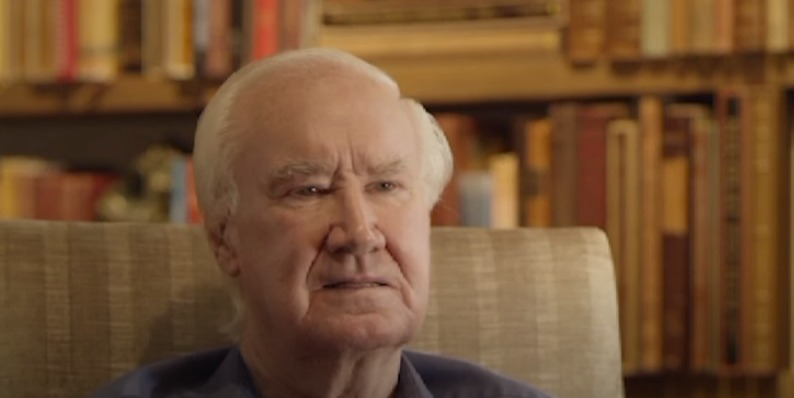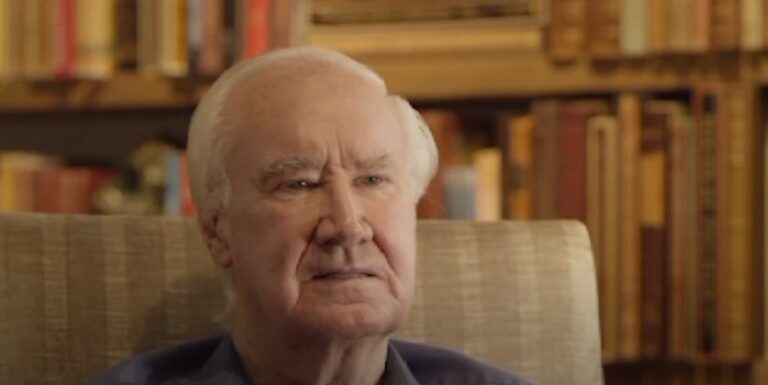Forrest Fenn lived like a man writing his own history, handling art for both academics and celebrities, and flying in a cockpit during 328 combat missions over Vietnam. His journey from the cockpit to a treasure map was not just incredible; it was meticulously self-written and almost cinematic in scope. People continue to wonder how Fenn’s distinct charm and love of storytelling transformed a private fortune into a public phenomenon years after his passing.
Rather than a single windfall, Fenn’s wealth was primarily the product of decades of strategic connections and acquisitions. At its peak, his Santa Fe gallery reportedly earned $6 million annually in a field where taste is as volatile as the stock market. His refusal to profit from his books, including The Thrill of the Chase, is a well-known example of his decision to put legacy before profit. But the story he crafted, entwined with enigmatic poetry and a $2 million hidden treasure, significantly boosted his cultural capital.
Forrest Fenn – Biographical and Financial Overview
| Category | Details |
|---|---|
| Full Name | Forrest Burke Fenn |
| Date of Birth | August 22, 1930 |
| Date of Death | September 7, 2020 |
| Age at Death | 90 |
| Residence | Santa Fe, New Mexico |
| Notable Roles | U.S. Air Force Major, Art Dealer, Author |
| Military Awards | Silver Star, Bronze Star, Purple Heart |
| Gallery | Fenn Galleries Ltd., Santa Fe |
| Gallery Revenue | Estimated $6 million annually |
| Treasure Chest Value | Estimated $2 million (auctioned for $1.3 million) |
| Estimated Net Worth | $20 million |
| Books | The Thrill of the Chase (2010), Too Far to Walk (2013) |
| Reference | Wikipedia – Fenn Treasure |
Wide-ranging American landscapes, especially the untamed Yellowstone regions where Fenn roamed as a boy, influenced his formative years. He never lost that spirit of wild exploration. Later, after being diagnosed with cancer in 1988, he started curating a legacy that would last beyond death, rather than merely artifacts. Inspired by both realism and romanticism, the notion of a hidden treasure became his way of dealing with the imminence of death; he would literally bury a piece of himself in the Rockies.

Fenn had fully recovered by 2010 and was prepared to launch his meticulously orchestrated cultural experiment. He published a mysterious poem that provided hints as to the location of the bronze chest he had buried, which was filled with gold nuggets, old jewelry, and coins. The outcome was immediate and remarkable: the lure of a contemporary gold rush attracted thousands of searchers, ranging from seasoned adventurers to desk-bound dreamers.
Notably, he frequently had clients who were larger-than-life individuals. His gallery was visited by Jackie Kennedy. He reportedly sold to Michael Douglas, Suzanne Somers, and Ralph Lauren. With a highly developed sense of collectible quality, Fenn handled rare pieces that ranged from European impressionist paintings to pre-Columbian jewelry, many of which ended up in esteemed private collections.
As information about the treasure came to light in recent years, public interest only grew. Jack Stuef, a medical student who chose to stay anonymous for months, eventually found the chest in 2020. Images of Fenn inspecting the retrieved items—a golden frog, worn scrolls, and other relics smeared with age and mystery—were included with the news when it was announced. The folklore was further enhanced when it was discovered that the final location was Wyoming.
The treasure hunt has cost a lot of lives over the last ten years in addition to making headlines. Unfortunately, at least five people died while searching. Public outrage and ethical discussion were raised by this, but Fenn remained steadfast. He thought it was worth taking the chance to seek wonder. His actions were in line with a larger cultural desire for adventure in a society that is becoming more and more digital.
Fenn created a complex brand that was both concrete and elusive by utilizing his artistic vision, military discipline, and natural storytelling ability. His estimated $20 million fortune was founded not only on business but also on a very clear understanding of the intersection between value and story. Fenn’s legacy continues to be instructive for art dealers throughout the United States. He proved that value is cultural, emotional, and frequently concealed beneath the surface; it is never just monetary.
The way that Fenn combined biography, treasure, and literature was especially creative. He decided to make his mark through public involvement rather than traditional philanthropy or museum donations. With perseverance rather than tickets, his treasure became a living museum. The lesson was remarkably similar for historians, curators, and artists: the telling of a story is often its greatest value.
Fenn was both admired and controversial at the height of his power. Although they never resulted in charges, federal investigations into his collection of artifacts during Operation Cerberus Action temporarily clouded his reputation. However, the episode had little effect on his popularity among fans, who viewed him as a quirky visionary who was pushing the limits of historical preservation and dissemination.
Fenn transitioned from art dealer to cultural mythmaker through well-timed publications and strategic curatorial efforts. His decision to conceal a treasure for poetic resonance rather than financial gain was audacious and perplexing. It reaffirmed his conviction that human curiosity can create a lasting legacy. Few people in his field dared to make history participatory, but Fenn did so by providing a material reward for abstract thought.
Modern storytelling endeavors like geocaching, alternate reality games, and viral puzzles that are utilized by both artists and brands bear a striking resemblance to Fenn. He enthralled a generation that was looking for something tactile in a world full of pixels, much like a maestro leading an orchestra of the imagination. His analog challenge worked remarkably well in a culture that is overloaded with information.
Fenn’s influence is particularly evident as treasure stories become more and more prevalent in popular media, whether through Netflix specials, viral YouTube channels, or best-selling thrillers. His story foresaw a cultural shift toward experiential storytelling and was more than just a personal statement. The cultural impact he left behind seems to outweigh the economic fallout, including lawsuits and additional claims.



